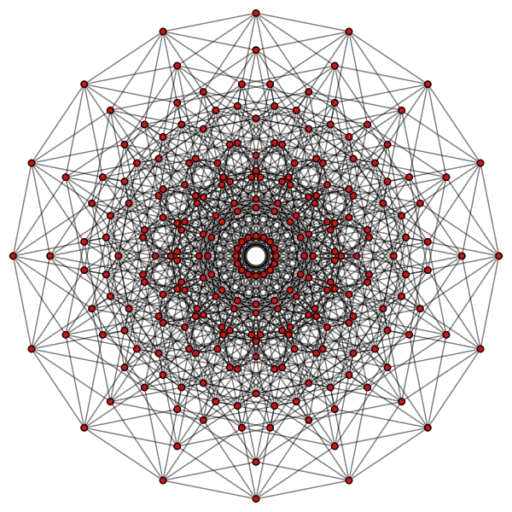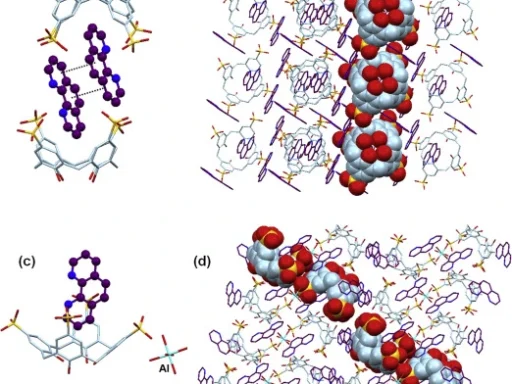Table of Contents
An overview of quasicrystals:
Quasicrystals are intriguing phenomena in the field of materials science that defy our traditional comprehension of crystalline structures. Because quasicrystals don’t have regular patterns, they don’t have the repeating atomic arrangements that regular crystals do. This means that they don’t follow standard crystallographic rules. Their discovery has revealed a domain with captivating potential, transforming our understanding of solid-state physics and presenting encouraging opportunities for groundbreaking applications.
An Overview of the Historical Context:
The exploration of quasicrystals began in the early 1980s when Israeli scientist Dan Shechtman made a significant discovery while examining an alloy composed of aluminium and manganese. Shechtman’s discovery initially sparked doubt and distrust, but it ultimately challenged the widely held belief in the symmetry of crystals. By conducting careful experiments and demonstrating persistence, he discovered a novel category of substances distinguished by their distinct atomic structures. This accomplishment led to his recognition and receipt of the Nobel Prize in Chemistry in 2011

Characteristics of Quasicrystals:
Quasicrystals possess distinct characteristics that set them apart from regular crystals. Traditional crystal structures forbid these characteristics, which include a non-repeating, aperiodic arrangement of atoms, long-range order, and symmetries.
Quasicrystals possess a variety of extraordinary characteristics that result from their atypical atomic arrangements. Regular crystals have precise translational symmetry and periodicity, but quasicrystals have fivefold rotational symmetry and structures that are almost periodic. These buildings have unique characteristics, such as strong tensile strength, low heat conductivity, and resistance to deformation. Moreover, quasicrystals exhibit complicated and self-similar patterns that resemble quasi-lattices, highlighting their intrinsic complexity and aesthetic appeal.
The Discovery Narrative: Transitioning from Doubt to Embracing
Shechtman’s identification of quasicrystals was initially regarded with scepticism and dispute among scientists. Conventional crystallographers have difficulties reconciling the apparent absence of regular patterns in quasicrystal structures with accepted principles of crystal symmetry. Nevertheless, additional tests and theoretical insights supported Shechtman’s findings, resulting in the universal acknowledgement of quasicrystals as a unique category of materials. Today, the study of quasicrystals serves as evidence of the significant impact that groundbreaking findings may have on scientific paradigms, highlighting the necessity of questioning established beliefs in the field of science.

An examination of the effects and practical uses:
Quasicrystals possess distinct characteristics that have generated substantial enthusiasm in several scientific fields, leading to numerous potential applications. In materials research, quasicrystals have shown potential as lightweight, high-strength alloys for aerospace and automotive applications. Because of their low-friction surfaces, they are well-suited for use as coatings in manufacturing and engineering. Additionally, the development of energy-efficient materials could potentially benefit from their thermal insulating qualities. Moreover, quasicrystals have attracted significant interest in the realm of nanotechnology due to their complex structures and customisable characteristics, which present novel opportunities for creating sophisticated materials and technologies.
Current areas of research and potential future opportunities:
Scientists are now investigating new ways to create quasicrystals, studying their basic features, and discovering potential real-world uses. State-of-the-art computational methods, including density functional theory and machine learning algorithms, are assisting in the development and forecasting of quasicrystal structures with customised features. Furthermore, the cooperation between physicists, chemists, and materials scientists is fostering innovation and expanding our knowledge of quasicrystals.
Difficulties and prospects:
Despite significant progress in quasicrystal research, significant challenges remain. Producing quasicrystalline materials on a large scale while maintaining exact control over their properties is still a challenging undertaking, necessitating breakthroughs in material synthesis and characterization techniques. Moreover, understanding the processes that control the creation and durability of quasicrystals presents fascinating scientific challenges that require interdisciplinary approaches and creative methods. In the coming decades, the issues at hand offer promising prospects for scientific exploration and technological advancement.

In conclusion:
Ultimately, the identification of quasicrystals serves as evidence of the effectiveness of curiosity-driven investigation and scientific examination. Quasicrystals have fascinated scientists and engineers since their initial discovery in the laboratory, evolving from a mere curiosity to a recognised class of materials with significant transformational capabilities. The ongoing investigation of quasicrystals has limitless possibilities for harnessing their full capabilities, ranging from the development of cutting-edge materials and gadgets to gaining a profound understanding of condensed matter physics.
Frequently Asked Questions: A Simplified Explanation of Quasicrystals
1). What sets quasicrystals apart from regular crystals?
Quasicrystals have atomic configurations that are not periodic and display a rotational symmetry of fivefold, which is different from the translational symmetry observed in regular crystals.
2). The original discovery of quasicrystals and the problems associated with their discovery are of interest.?
Dan Shechtman first discovered quasicrystals in the early 1980s, but their unorthodox shapes were met with scepticism and dispute among scientists.
3). What are the main characteristics of quasicrystals, and how do they enhance their potential uses?
Quasicrystals possess remarkable characteristics such as superior tensile strength, reduced heat conductivity, and resistance to deformation, which make them highly desirable for a wide range of engineering and materials science applications.
4). The current research focus on quasicrystal science and the forthcoming challenges are interesting.?
The current research endeavours are concentrated on creating quasicrystals with customised features, comprehending their underlying characteristics, and tackling obstacles associated with material synthesis and characterization.
5). The potential future applications of quasicrystals, as well as their impact on technology and industry, are of interest.?
Quasicrystals have the potential to greatly impact multiple sectors and technologies by offering a variety of applications, such as lightweight structural materials, energy-efficient coatings, and improved electrical gadgets.
For more chemistry blogs, visit chemistry Master





